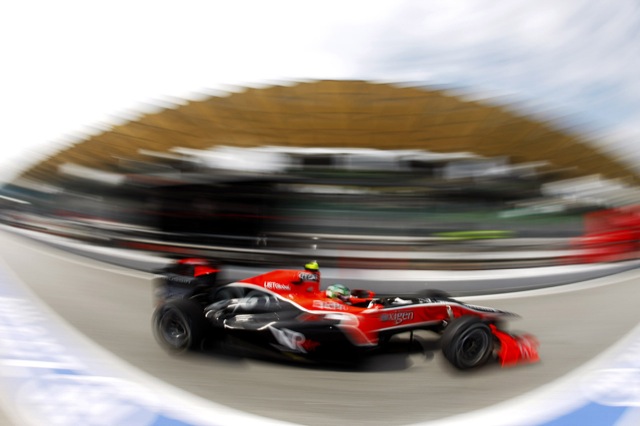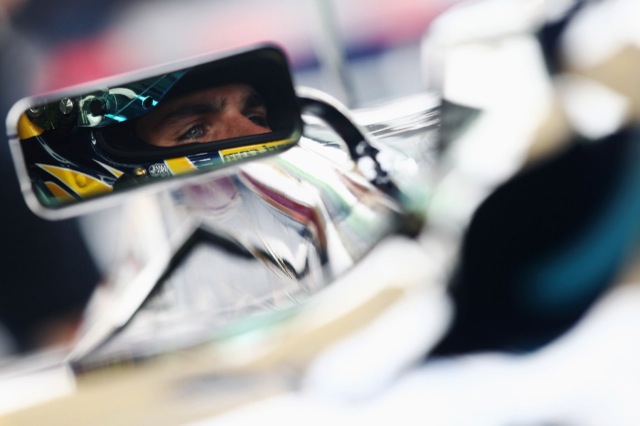Having only just managed to get on the 2010 Formula One grid, Peter Sauber once again returns to the sport he so dearly loves with his old team, again under his control after a brief soiree with German motor manufacturer BMW. Sauber never completely left his team and was retained by BMW as an advisor, but when the marque decided to abandon the sport, Sauber couldn’t allow his hard work go to waste and re-took control. The car, which was under construction in 2009, is called the C29 and will line up on the grid in Bahrain with Pedro De La Rosa and Kamui Kobayashi at the helms.
Launched on the same day as the Renault R30, the C29 was unveiled at Valencia’s Ricardo Tormo circuit just as the first group test got underway. The car looks quite different to its predecessor, the F1.09, sporting like most others a longer wheelbase, higher and tighter nose as well as an updated livery. However, along with the official name of the team, many of the traits that were associated with BMW have remained. Officially going by the name of BMW Sauber, just as they did before, the team are running close to the wind as the engine that will power the C29 comes from Ferrari. While the name may be fixed, Ferrari cannot be especially happy with this, although the two manufacturers are not exactly in direct competition with each other.
The other trait that has followed over from years previous is the livery. It seems odd that the one thing the team could have done to help mark out the difference between the squad’s past and present was not utilised to its best. Instead of changing the visual appearance of the car, Sauber have instead opted for a similar livery, using dark blue and white with flashes of red. Certainly the shade of the blue has been adjusted and is much darker than that used by BMW (it’s almost black), and although a lack of sponsors means a colour scheme can perhaps wait, it should be noted that Brawn changed their war paint after Honda sold the team. Unfortunately though, we are once again subjected to the rather dull livery that I had hoped would be assigned to the history books.
Looking at the car, it is quite different to BMWs of the past, and it also looks quite simple with very few flourishes. BMW reduced their spending on the team last year, and perhaps this is reflected in the apparent simplicity of the car, but having said that, it could just be the blandness of the colour scheme that hides the little details that usually set apart the differences between the cars.
Like the Renault R30, the Sauber C29 sports a wide nose that has been raised up from the front wing, which now includes some extra carbon fibre in a bid to channel the air around and over the car more efficiently. The nose is, like so many others, shallower and thus gives the appearance of tightness and compactness. There is no Newey-dip on the top of the monocoque and the sidepods are perhaps the smallest I have seen so far of all the new challengers to have been launched. Although the car may be non-Newey at the front though, Sauber have added a shark-fin to the engine cover, which devoid of sponsors, stands out like a sore thumb in its brilliant white finish.
To be honest, the car doesn’t look special, but then the overall pace of a Formula One machine is rarely decided by the way it appears. It will be interesting to see how the C29 performs with a different engine to before, and the choice of drivers will also be something I will discuss as the season gets underway. Pedro De La Rosa is an old hand who knows how to develop a car. The Spaniard spent many years at McLaren testing their challengers, but in terms of outright racing experience, the 38 year old has only competed in 72 grands prix.
Although it is great for De La Rosa to be back in a race seat, I fear his younger team mate may show him up and prove to be the catalyst for Pedro’s retirement. Kamui Kobayashi impressed in 2009, despite only taking part in two races. His aggressive style and lack of fear marked him out among fans and the other drivers, and the young Japanese pilot is someone worth watching. We may have lost the likable Kazuki Nakajima from the grid, but we’ve gained the crazy Kobayashi in return.
Sauber’s car designation system refers to Peter Sauber’s wife, Christine, and an incremental numbering system that for 2010, has reached 29. Hence, C29. The numbering system was carried over from sports cars to Formula One, Sauber only building one race car each year. Interestingly, the last Sauber to compete in Formula One was the C24 in 2005, but instead of picking up where the numbering system left, Sauber has decided to continue the numbers in the team’s absence and so the 2010 car presumes the designation had continued during the BMW period.























I had to smile at that. Only 72? 🙂
Considering PDLR debuted at the 1999 Australian Grand Prix, I’d say that only 72 was quite a wisely chosen word. 😀